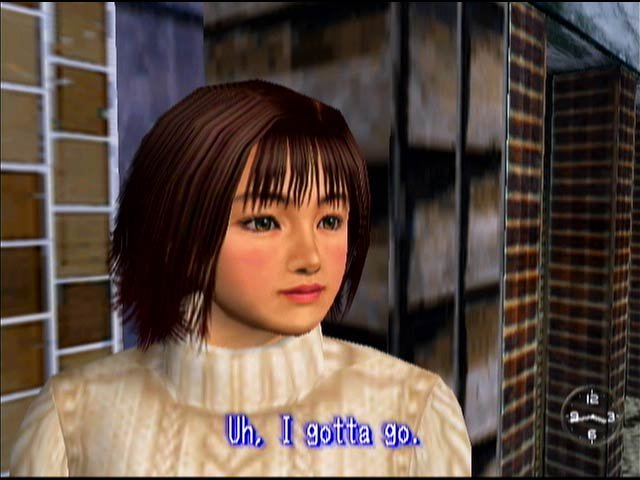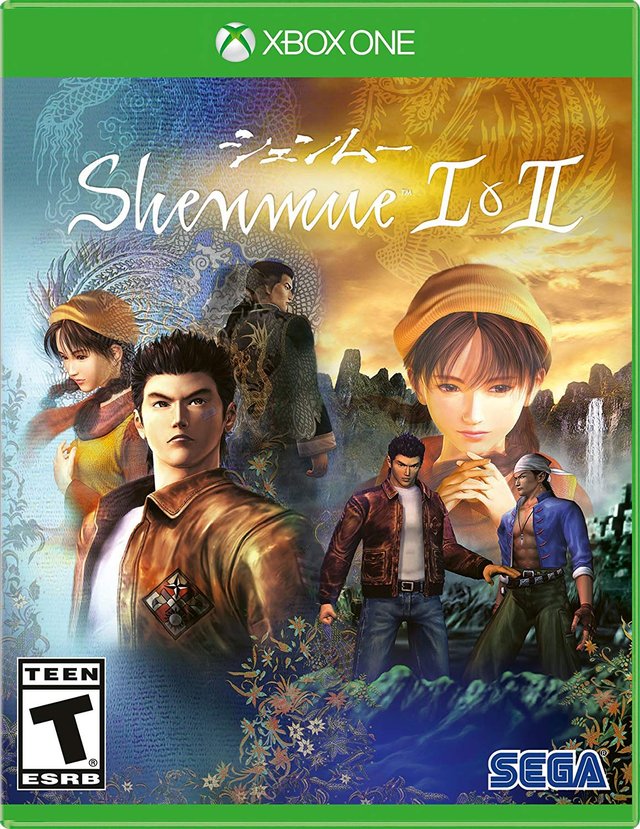
My earliest memory of the Dreamcast classic Shenmue is spotting it on the shelves of ShopKo on clearance. I bought Shenmue, Seaman, and Soul Calibur that day all for a bargain. Of course, I opened and played them all. And while Soul Calibur is still somewhat in the realm of relevance, having spawned many sequels and a re-release on Xbox 360, the others have somewhat been lost to time and are far out of the memories of many. But now, on August 21st, the world will know Shenmue again with the release of Shenmue I & II for Xbox One, PlayStation 4, and PC.
This new release features high resolution output, widescreen during gameplay, modern controls, and faster loading times. It does not feature updated or higher resolution textures and graphics, however, which I'm actually happy about for several reasons. First: the graphics hold up pretty well today. Sure, they might be a little blocky, but look at the faces. Those faces on the characters look excellent. Secondly, the original graphics are charming and cause some nostalgia. Lastly, this means that the artistic integrity of the game is preserved, in contrast to other games which saw updated graphics, most notably Perfect Dark, which saw the main character undergo a transformation that left her ugly and unrecognizable to long-time fans.

Gameplay, Story, and Characters
This is what Shenmue is about - story and characters. The gameplay is there, but this is no action game. This is no traditional RPG. This is its own genre, termed "FREE", which stands for "Full Reactive Eyes Environment". The closest thing we have today are open-world games such as Crackdown, Disneyland Adventures, and Grand Theft Auto. This means that the world is its own, where unique weather events occur, holidays occur, time passes, people have jobs and routines, and real-world brands exist (although not in the re-release).
The actual gameplay itself is mostly slow-paced. It's not intended to be an action game, fighting game, or RPG. It's heavily story-driven, with action and fighting elements (and even a race or two). But even though it crosses genres a bit, it doesn't mean that the quality of the core game suffers. It is designed to be a game of detective work - talking, taking notes, and talking some more. You learn about the murder of Ryo Hazuki's father through the witnesses and related characters who where around "that day". You can enter shops, purchase items, collect cassette tapes, use vending machines, and even play a Sega Saturn and various classic Sega arcade games. It's dedicated fun with an engaging story.
Interspersed with the story are fighting sequences, quick-time events (QTEs), and mini games. Given the game's roots in Virtua Fighter, you can expect a deep fighting system, which is used in many fighting events, with multiple moves to discover and master. QTEs are introduced with Shenmue, and they're used to advance the story, and used in mini games. Mini games are primarily in the arcade and in playing darts, but you can also gamble (at least, in the sequel).
The story is this: Ryo Hazuki's father is killed by a strange man, and now Ryo has to uncover the mystery of who this man is and why he killed Ryo's father. That's pretty well it. There's an artifact, there are side-stories such as with Nozomi, and there's time to kill. The basis of the story may sound common or only barely interesting, but it's the way the story plays out that holds your interest.
The characters in the game are generally deep, interesting, and react with emotion. Ine-san expresses dismay over the death of Hazuki Sensai, Nozomi struggles with leaving for Canada, and Ryo expresses a variety of emotions in a myriad of situations. These people are real, not caricatures. Now, there are some one-dimensional side-characters that border on reality, but for the most part, the characters are solid and have depth to them.
Nostalgia
Everything about this release excites me. Hearing the music, seeing the graphics, engaging in the story... everything. Especially because I was too young to really appreciate the story and the game when it came out, and the fact that I didn't actually finish the game until maybe ten years later makes it so I want to take this journey again. Let's not even mention the fact that I still haven't finished the second game. Oops. I mentioned it.
If you're interested in seeing how modern gaming was defined and experiencing one of the greatest games of all time, then definitely buy this game. It's not in the same vein as the compilations of games from PlayStation or the original Nintendo Entertainment System. It's modern gaming at its beginning, presented in nearly raw form, and ready to be consumed by an appreciating public. Try it. Love it. Share it.
